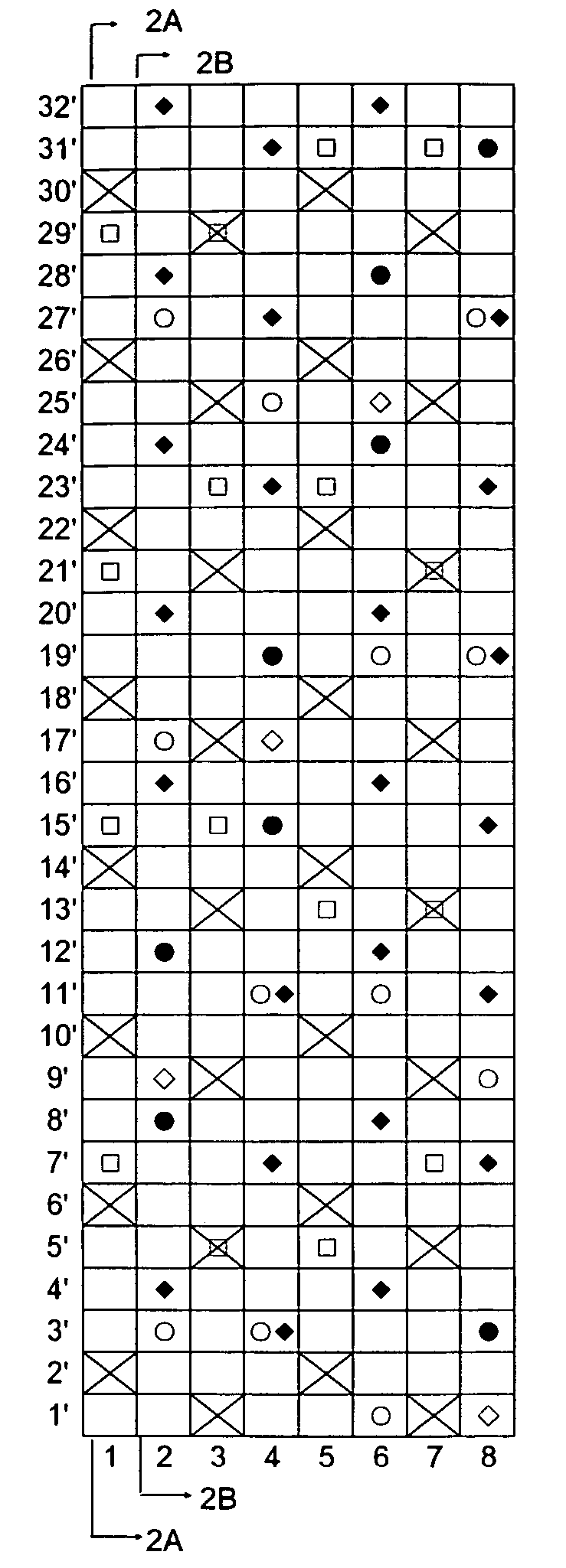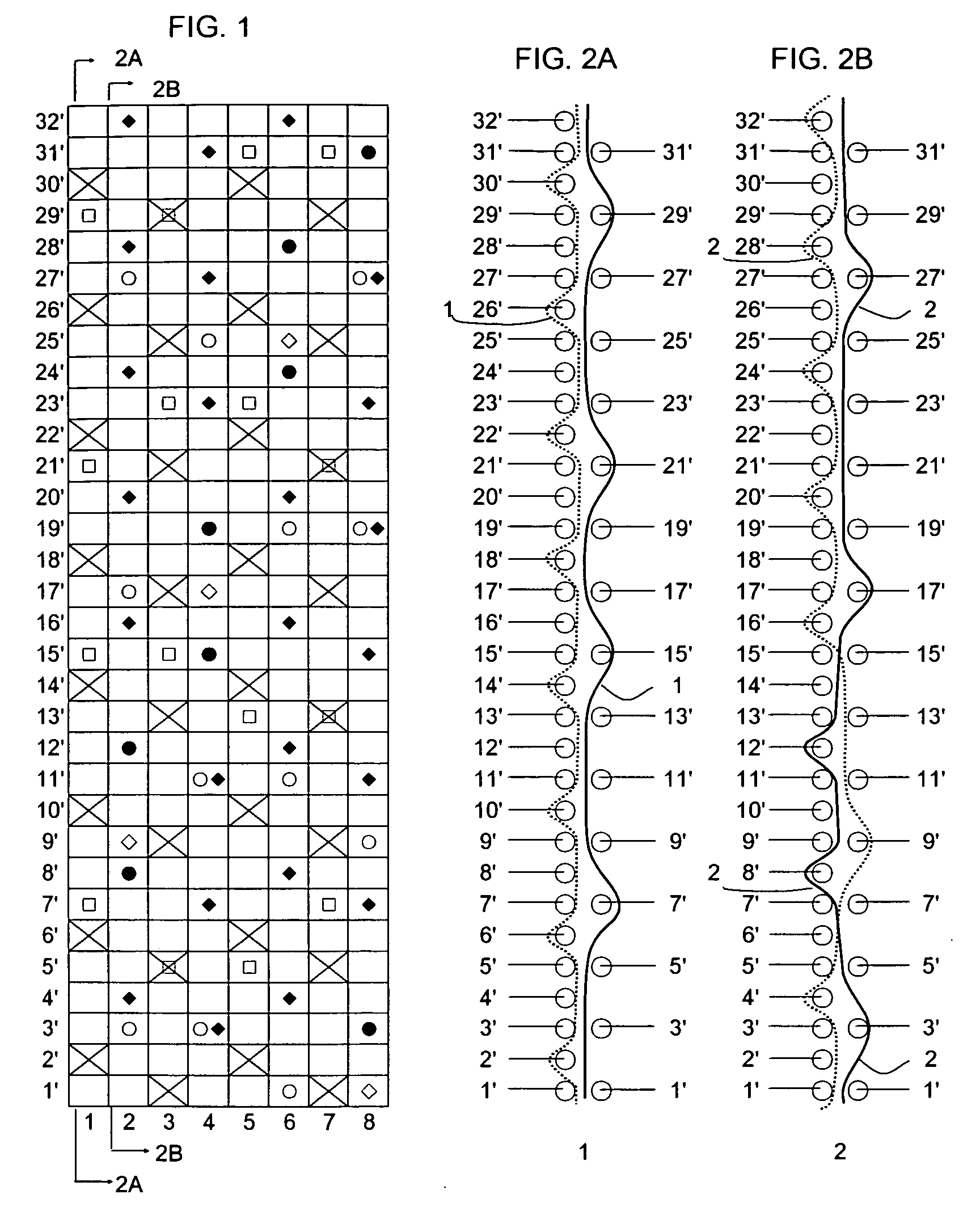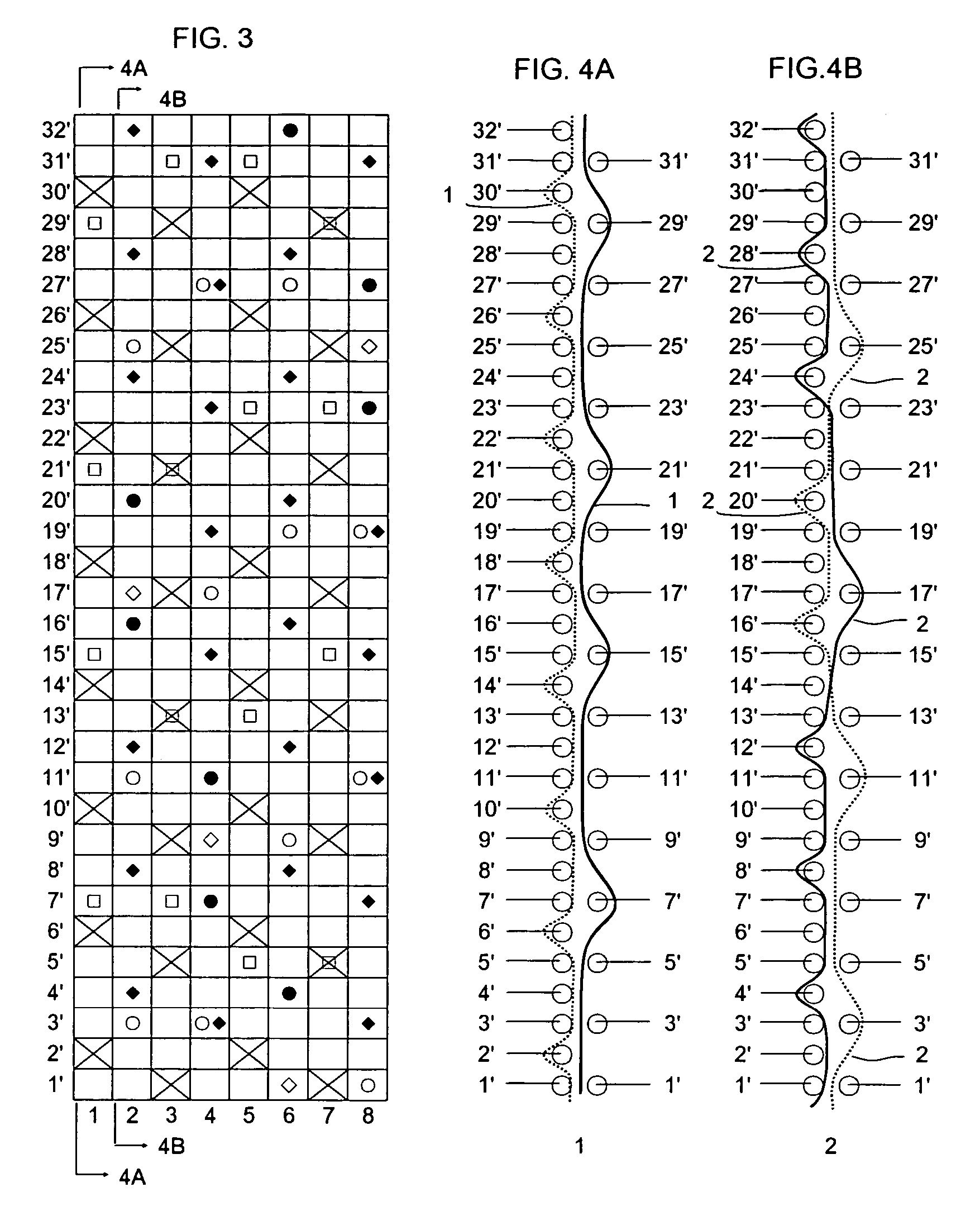Industrial two-layer fabric
a two-layer fabric and fabric technology, applied in the field of industrial two-layer fabrics, can solve the problems of fabric also having a problem, short life, and increased requirements for papermaking fabrics, and achieve excellent water drainage properties
- Summary
- Abstract
- Description
- Claims
- Application Information
AI Technical Summary
Benefits of technology
Problems solved by technology
Method used
Image
Examples
example 1
[0068]FIG. 1 is a design diagram of a fabric of Example 1 of the present invention. FIGS. 2A and 2B include cross-sectional views taken along the lines 2A-2A and 2B-2B of the warp pair 1 and binding warp pair 2 illustrated in the design diagram of FIG. 1 respectively. This fabric is woven by the pair of two warp binding yarns and it has a complete design formed by four binding warp pairs 2, 4, 6 and 8 and four warp pairs 1, 3, 5 and 7.
[0069] The fabric has, as an upper side layer, a sateen weave design obtained by shifting, with a certain regularity, a 1 / 3 design in which a warp passes over one upper surface side weft and then passes under three upper surface side wefts. Upper surface side wefts and lower surface side wefts are arranged at a ratio of 2:1.
[0070] In the design diagram of FIG. 1, indicated by numerals 2, 4, 6 and 8 are each a binding warp pair composed of two warp binding yarns, while indicated by numerals 1, 3, 5 and 7 are warp pairs composed of an upper surface sid...
example 2
[0081]FIG. 3 is a design diagram illustrating a fabric of Example 2 according to the present invention. FIGS. 4A and 4B include cross-sectional views taken along the lines 4A-4A and 4B-4B of the warp pair 1 and the binding warp pair 2 illustrated in the design diagram of FIG. 3 respectively. The fabric of this example is woven by a pair of two warp binding yarns and four bind warp pairs and four warp pairs constitute its complete design.
[0082] The upper side layer of this fabric has a sateen weave design obtained by shifting, with certain regularity, a 1 / 3 design in which a warp passes over an upper surface side weft and passes under three upper surface side wefts. Upper surface side wefts and lower surface side wefts are arranged at a ratio of 2:1.
[0083] In the design diagram of FIG. 3, indicated by numerals 2, 4, 6 and 8 are binding warp pairs composed of two warp binding yarns, while indicated by numerals 1, 3, 5 and 7 are warp pairs composed of an upper surface side warp and a...
example 3
[0089]FIG. 5 is a design diagram illustrating a fabric of Example 3 according to the present invention. FIGS. 6A and 6B include cross-sectional views taken along the lines 6A-6A and 6B-6B of the warp pair 1 and the binding warp pair 2 illustrated in the design diagram of FIG. 5 respectively. The fabric of this example has a complete design formed by two binding warp pairs and six warp pairs. The binding warp pair is composed of a warp binding yarn and a lower surface side warp. The upper side layer of this fabric has a sateen weave design obtained by shifting, with certain regularity, a 1 / 3 design in which a warp passes over an upper surface side weft and then, passes under three upper surface side wefts. Upper surface side wefts and lower surface side wefts are arranged at a ratio of 2:1.
[0090] In the design diagram of FIG. 5, indicated by numerals 2 and 6 are binding warp pairs composed of a warp binding yarn and a lower surface side warp, while indicated by numerals 1, 3, 4, 5, ...
PUM
 Login to View More
Login to View More Abstract
Description
Claims
Application Information
 Login to View More
Login to View More - R&D
- Intellectual Property
- Life Sciences
- Materials
- Tech Scout
- Unparalleled Data Quality
- Higher Quality Content
- 60% Fewer Hallucinations
Browse by: Latest US Patents, China's latest patents, Technical Efficacy Thesaurus, Application Domain, Technology Topic, Popular Technical Reports.
© 2025 PatSnap. All rights reserved.Legal|Privacy policy|Modern Slavery Act Transparency Statement|Sitemap|About US| Contact US: help@patsnap.com



